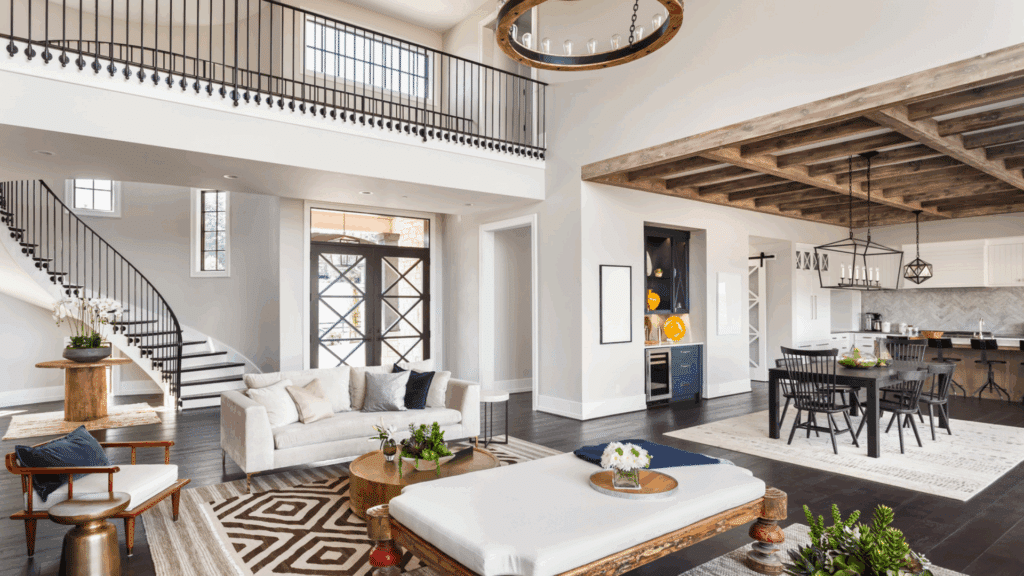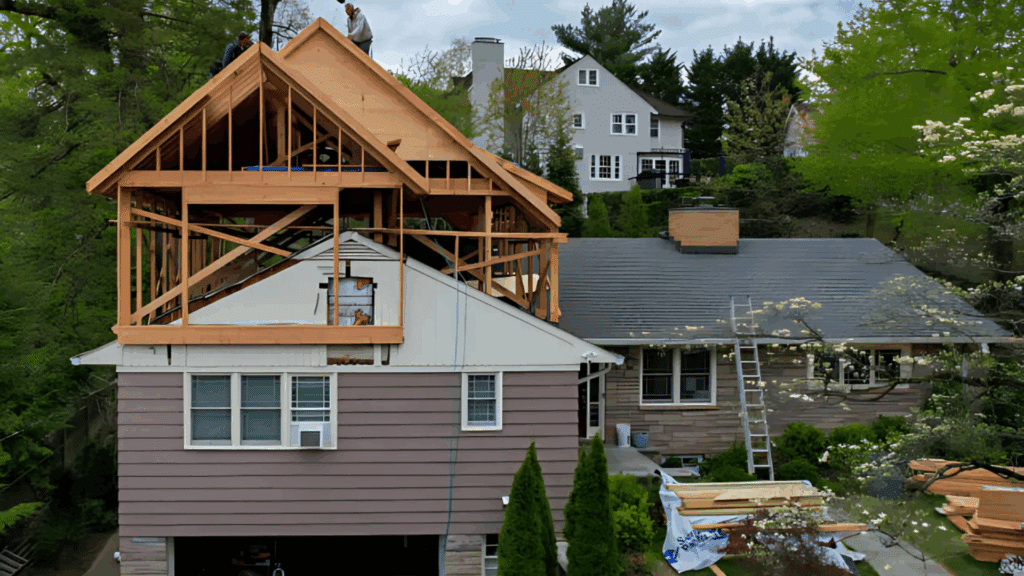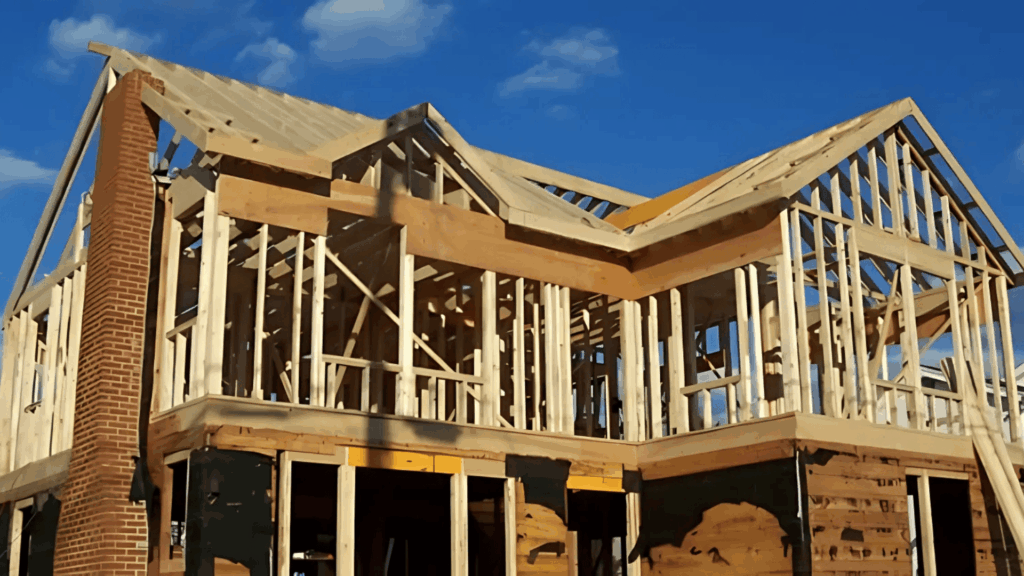When I first considered adding a second story to my home, I quickly realized how many questions needed clear answers.
How much does it cost to add a second story? Would the money spent bring enough value in return? What kinds of problems might come up during construction?
These thoughts kept me searching for real accounts from homeowners who had already been through the process.
I found stories of people who were thrilled with the extra space and increased property value, as well as others who faced challenges, unexpected costs, and regrets.
Learning from their experiences gave me a balanced view of what this project really involves. In this blog, I’ll share the insights I gathered so you can prepare with confidence and make the best choice for your own home improvement plans.
Why Homeowners Consider Adding a Second Story
Over time, a home that once felt perfectly sized can begin to feel tight. Growing families often need additional bedrooms, more storage, or flexible areas for work and relaxation.
Some homeowners consider relocating, but the thought of leaving a familiar neighborhood, established friendships, or a good school district makes moving less appealing.
This is when the idea of adding a second story starts to stand out. Building upward creates valuable space without taking away from the yard or requiring new land. It allows homeowners to stay where they feel rooted while still meeting modern needs.
A second-story addition can mean creating a master suite, adding playrooms, or simply giving everyone more breathing room.
Of course, the choice is not only about space but also about understanding the costs, challenges, and responsibilities that come with such a project.
How Much Does It Cost to Add a Second Story

The cost of adding a second story varies based on the home’s size, materials, and labor. Initial estimates often increase once structural needs, permits, and design features are considered.
| Factor | Average Cost Range | Notes |
|---|---|---|
| Structural Engineering | $10,000 – $30,000 | Ensures the foundation can support an additional floor |
| Construction | $100 – $300 per sq. ft. | Covers framing, roofing, insulation, and drywall |
| Plumbing & Electrical | $20,000 – $50,000 | Extending and upgrading systems to the second floor |
| Permits & Fees | $5,000 – $15,000 | Varies by location and building requirements |
| Design & Architect | $15,000 – $40,000 | Covers planning, layouts, and customization |
The overall cost to add a second story typically ranges between $150,000 and $500,000, depending on your home’s size, design, location, and finishes.
Real Challenges Homeowners Faced During Second Story Additions
Adding a second story often brings surprises that go beyond the initial plan. Homeowners frequently talk about unexpected setbacks, additional expenses, and lifestyle disruptions.
- Extended timelines: Many projects ended up taking longer than anticipated. Homeowners reported delays caused by inspections, weather, or labor shortages, which stretched completion by several weeks or even months.
- Hidden costs: Unexpected expenses were common, especially with older homes. Issues like outdated wiring, plumbing reroutes, or roof modifications often added thousands to the overall budget.
- Living arrangements: Some families found it impossible to remain in the house during construction. Noise, dust, and safety risks pushed them to seek temporary housing, which added more expense.
- Permit complexities: Zoning approvals and building permits proved more difficult than expected. Navigating local requirements sometimes led to frustrating delays and extra fees.
- Structural concerns: Engineers often found that the original foundation needed reinforcement. Strengthening the base added time and money, but it was necessary to ensure safety.
- Design changes: Mid-project adjustments, either for functionality or style, frequently raised costs. Even small changes in layout or finishes extended timelines and required additional approvals.
Cost to Add a Second Story vs. Buying a New Home

When families outgrow their current home, they choose between building up or moving to a larger property. Each has pros and cons. Understanding these helps homeowners weigh costs, convenience, and long-term benefits before investing.
| Aspect | Adding a Second Story | Buying a New Home |
|---|---|---|
| Location | Stay in the same neighborhood and keep community ties | May need to leave established area, schools, and neighbors |
| Cost | Typically between $150,000 and $500,000, depending on size and finishes | Moving costs plus purchase price of a larger home, often $400,000 to $700,000+ |
| Timeline | Months of construction with disruption to daily life | Immediate move-in once purchase is complete |
| Customization | Design tailored to your family’s exact needs, fully personalized | Limited to existing layouts, though upgrades are possible |
| Value | Adds long-term property value and maximizes land use | Dependent on the housing market and neighborhood value |
| Convenience | Requires patience and possible temporary housing during the build | Avoids construction stress but involves house-hunting and relocation logistics |
Second Story Additions: Challenges and Regrets
Many homeowners enjoy the extra space, but some wish they had planned better. Common regrets include misjudging construction, missing hidden costs, and not preparing for daily disruptions.
- Not hiring an experienced architect to ensure the design and structure worked together properly
- Skipping a thorough inspection of the existing foundation before starting construction
- Ignoring the need for temporary housing during months of noise, dust, and disruption
- Underestimating costs by calculating only square footage instead of factoring in permits, labor, and system upgrades
- Choosing a contractor without checking reviews or past experience with second-story additions
- Failing to budget extra funds for unexpected issues like wiring, plumbing, or roofing changes.
Lessons and Personal Recommendations from Homeowners

Homeowners with a second-story addition share practical advice to avoid mistakes, emphasizing planning, working with the right professionals, and preparing for challenges during construction.
- Hire the right contractor: Choosing a contractor with proven experience in second-story projects ensures smoother construction and fewer costly errors. Checking reviews and past work builds confidence in their ability to handle complex builds.
- Invest in proper design: A well-planned design prevents major changes later. Homeowners stress that paying for detailed architectural work saves time, money, and stress throughout the project.
- Plan for disruptions: Construction creates dust, noise, and limited access. Many recommend arranging temporary housing or setting aside quiet areas to maintain comfort and safety.
- Budget extra funds: Unexpected costs almost always arise. Setting aside an additional cushion helps manage surprise expenses without halting progress or creating financial strain.
- Communicate regularly: Staying in close contact with contractors and architects avoids misunderstandings. Regular updates keep projects on schedule and allow issues to be resolved quickly.
- Check permits early: Delays often come from zoning and building approvals. Starting the permit process in advance helps the project move forward without unnecessary setbacks.
Is Adding a Second Story Worth It?
Deciding if a second-story addition is worth the investment depends on your long-term plans and lifestyle needs.
For many homeowners, staying in a beloved neighborhood is the top priority, and building upward allows them to enjoy more space without losing community ties.
Adding a second story can also provide a significant boost in property value, especially in areas where land is limited. At the same time, this project requires patience, careful budgeting, and realistic expectations.
The cost is substantial, and the disruption to daily life can be stressful. Some homeowners who were already open to moving found that buying a larger home made more sense.
However, those who planned carefully and prepared for challenges often expressed satisfaction with the outcome. The key is to align the project with your goals and ensure you are financially and emotionally ready.
Weighing the Pros and Cons of a Second Story Addition

Before deciding to build upward, it helps to consider both the benefits and the challenges. A second story can bring lasting value and comfort, but it also comes with financial and practical hurdles.
| Aspect | Pros | Cons |
|---|---|---|
| Location | Stay in the same community with familiar neighbors and schools | Moving may be simpler if relocation is already being considered |
| Space | Gain extra bedrooms, offices, or living areas without losing yard space | Requires months of construction and temporary disruption |
| Value | Boosts property resale value in competitive markets | High upfront costs and potential for hidden expenses |
| Design | Customize the layout to fit the family lifestyle | Changes mid-project can add delays and unexpected costs |
| Convenience | No need to search for a new property or deal with moving logistics | Some families need alternative housing during construction |
Conclusion
After going through real stories and shared experiences, I believe the decision to add a second story is not just about cost but about preparation and priorities.
If I were to take on such a project, I would carefully choose a contractor, budget more than expected, and plan ahead for disruptions.
What stood out most to me from homeowners’ reflections is that those who entered the process with realistic expectations were the most satisfied with the outcome.
The extra space and added property value can be worth it, but only if you’re ready for the time, effort, and stress that come with it.
I hope this guide helps you think through your options with clarity. If you found it useful, please share this blog with others who may be considering a second-story addition.

